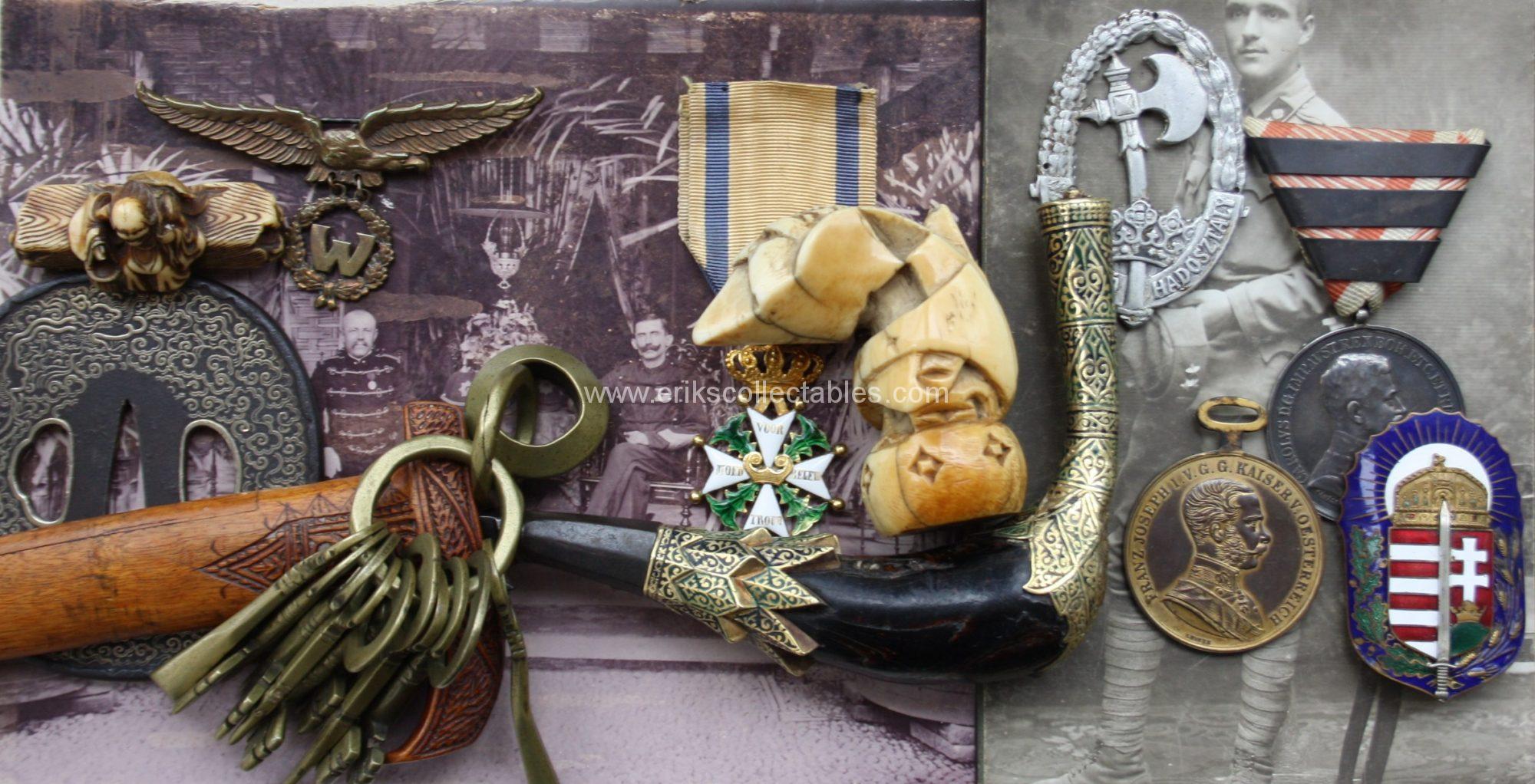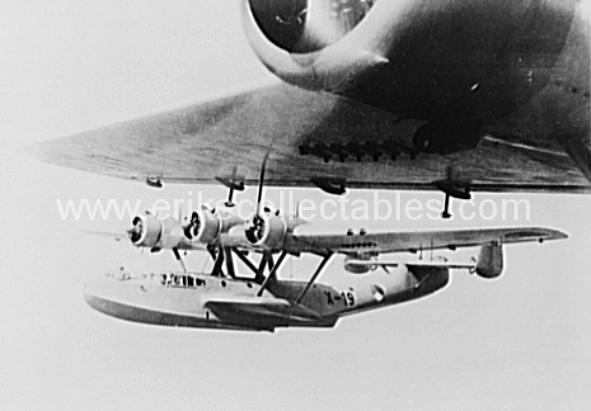A few years ago I found this Dutch Flying Cross award paper which became the start of an interesting quest into the historical background and the person behind the award.

The result of this quest was published in Decorare, the magazine of the Dutch Order & Medal Society but here is a somewhat shorter version in English for the international audience. The full article in Dutch is available as a download at the end of the blog.
The award was made to Jan Harkema, born in Velp, June 5th, 1916. In the ‘40s he was working as “coxswain” on a ship for the Koninklijke Pakketvaart Maatschappij (KPM), the company responsible for most of the sea transport to and within the Netharlands East Indies. He also was a reserve officer in the Royal Navy Reserve. In that capacity he was navigator and commander of a “flying boat”. About the man himself nothing more could be found, no picture, no family, not one trace but based on the document of the award I have been able to reconstruct some details of the activities for which he was awarded the Flying Cross.
Naval Air Force (MLD) in the Dutch East-Indies
In 1942 on the onset of the war with the Japanese in the Dutch East-Indies the MLD was active with almost 60 Flying Boats of the types Dornier Do 24K and the Consolidated PBY Catalina. These flying boats had a crew of 6 of which one was the commander, either a pilot or navigator (depending on rank of the pilot whom often also was the navigator).
The flying boats were divided in groups of 3 of the same type (in short GVT, for Groep VliegTuigen) followed by a number, in the case of Harkema GVT8. Crews could change flying boats based on maintenance or issues but would fly the same one on most occasions. Also the flying boats were individually numbered, where the Catalina’s would have a Y as prefix and the Dorniers an X for Lt. Harkema the X-16, a Dornier.

The Dutch Flying Cross, Vliegerkruis, equivalent to the DFC/DFM
The Flying Cross was established in 1941 and could be awarded to all ranks unlike its English counterpart. Up to date it has been awarded only 767 times and with some corrections for mistakes and multiple awards it was awarded to a total of 702 people in total. One person received the Flying Cross 3 times, 31 people received it twice. Up to 1946 it could not be awarded posthumously which is interesting in this case. In 1946 the criteria changed and a total of 68 crosses would be awarded posthumously.
By Royal Decree
The Dutch bravery medals of which this is one are always awarded by Royal Decree, in this case Decree number 2 of March 21st 1944 with the following text:
“as a very young navigator – flying boat commander of our Naval Air Force in the Dutch East Indies he has shown courage and perseverance in the performance of many reconnaissance and convoy flights during the extend of the war for and in the Dutch Indies and more specifically for the saving of survivors of the sunk steamship ‘Sloet van de Beele’ and our destroyer ‘Van Nes’, further the participation in the possible destruction of an enemy transport ship near Muntok on February 24th 1942, on which flight the plane was shot down by enemy fighters, but he was able to save his crew and himself on the island ‘Noordwachter’.
In war with the Japanese
The above actions took place during the Japanese attack on the Dutch East Indies. Lt. Harkema and his crew were involved from the start in the mentioned reconnaissance flights and flights in defense of ship convoys but they also flew many evacuations of civilians from Borneo to the relative safety of Java. This information and more was taken from a report of the commander of GVT8 in that period, W. Aernout that I found in the archives of the NIMH (Dutch Institute for Military History)
Rescue operation
The destroyer HMS Van Nes was sent to the island of Billiton on February 16th 1942 to meet the transport ship SS Sloet van Beele there which had been tasked with the evacuation of Dutch military personnel and civilians to Java.

Both ships arrived roughly the same time in the harbor of Tandjong Pandan on feb 17th. After the loading of 400 people on the SS Sloet van Beele they started their journey to Java but only half an hour later a Japanese plane was spotted. The Dutch opened fire but were not able to destroy the plane. In the early afternoon two groups of 10 Japanese bombers each were spotted. They started bombing the slow transport ship first which sunk in less than 5 minutes leaving only 5 rescue boats and a total of 203 people alive, 249 people are believed to have died in the attack but no exact list survived. After this the Japanese bombers concentrated on the Dutch destroyer that was able to withstand the attacks for some time but ultimately also sank and 68 of the crew of 143 people lost their lives.
The location of the survivors was found by a patrol of flying boats and the rescue operation lasted several days to locate and transport all of the survivors. The crew of Lt. Harkema transported 55 people to safety during this operation!
Bombing raid
Several days later in the night of 24/25th of February 1942 the two aircraft of GVT8 that were still able to fly, the X-17 and X-18 went on a night bombing mission near Muntok. The X-16 of which Lt. Harkema was commander was not able to fly so he went with the X-18 as an additional navigator for the bombing raid. After successfully bombing a Japanese transport ship they wanted to return to their base but where both shot down by Japanese Zero fighters.
The X-18 crew was fortunate as they were able to land on the water before the plane caught fire. So with their life jackets but without the rescue boat, which had been riddled by Japanese bullets they could swim to the nearby, uninhabited, island Noordwachter. From there they were rescued by the minesweeper HMS Djombang shortly after.
A passing Catalina made a picture of the wreck of the X-17 but the crew was never found.

Evacuation
On March 2nd the remaining flying boats evacuated to Broome Australia. But Lt. Harkema no longer had a Flying Boat and only pilots were added to the crews of the remaining flying boats. His commander Aernout, pilot and author of the report did. Lt. Harkema would be evacuated on the MS Poelau Bras. That ship was planned to evacuate more than 100 high ranking Navy officers and many civilians of importance to Australia on March 6th. That ship had only had place for 56 passengers so it was heavily overcrowded. On March 7th a Japanese reconnaissance plane found the ship, several hours later a group of 12 bombers followed and attacked the ship that after an intense resistance fight sunk nevertheless. The total amount of casualties remains unclear but is estimated at 200 and 116 survivors. Lt. Harkema was amongst the casualties. The survivors ended up in Japanese POW camps where even more would perish during the course of the war.

As the casualties only had a seaman’s grave the only place where the name of Lt. Harkema can be found today is on a Naval Air Force remembrance plaque in the Dutch military cemetery Kembang Kuning in Surabaya Indonesia.
In 1944 he was awarded the Flying Cross, which could not be awarded posthumously yet. The text is also in such a way that it is clear the awarding committee was not aware he had already died in the period after the actions for which he received the award. In 1946 his family received the Royal Decree which they had framed.
I have not been able to find a picture of him nor living relatives but he has not been forgotten!
With this article I want to honor and remember Jan Harkema, a brave young officer of the Royal Dutch Naval Airforce, Rest in Peace.

Disclaimer: from the photo’s used in this article I could not retrace the copyright, all came from public sources and are believed to be part of the public domain. There is no intention of infringement of copyrights! If you are the owner please contact me so I can adjust the references.

